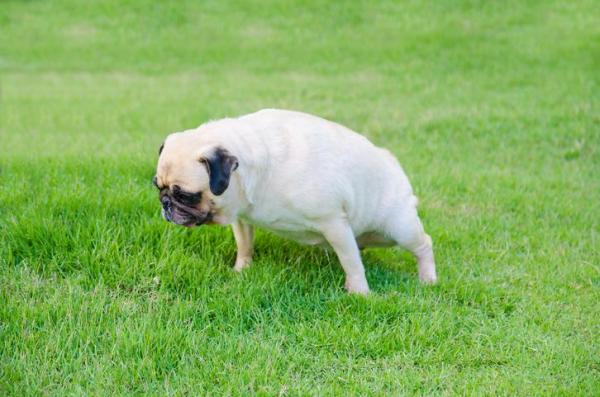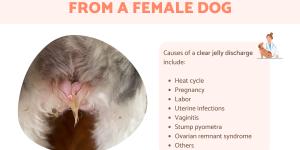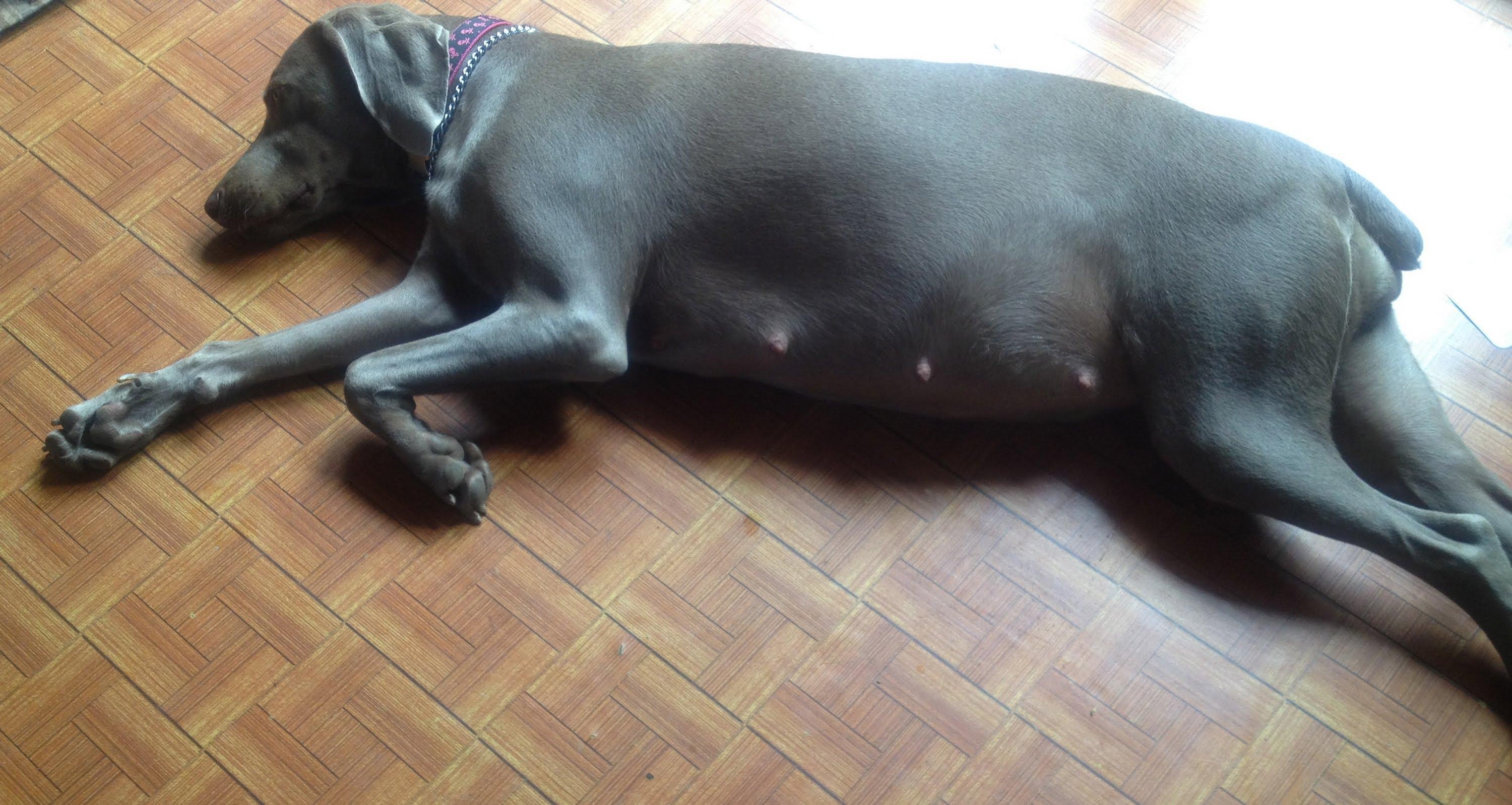My Female Dog Has Green Discharge



See files for Dogs
The causes of green discharge in a female dog will depend on various factors, with whether they are pregnant or spayed being particularly important. Generally speaking, green discharge is the result of infection since it suggests the presence of purulence (pus). If there is a smelly odor along with the discharge, infection is even more likely. If the discharge is coming from the vulva, it is also likely related to her reproductive system. It is also possible the urinary system is the root of the discharge.
At AnimalWised, we look at why my female dog has green discharge. We help you to understand the possible causes of this issue and what treatment options may be available.
Disease causing green discharge in a female dog
If our female dog has green vaginal discharge, it is possibly the sign of infection. Green purulent discharge can be a product of the immune system trying to fight the microbes which cause infection. When this discharge comes from the dog's vagina, it could be due to an infection somewhere in the urinary tract, such as the bladder, or the reproductive system, such as the uterus or the vagina itself.
We will also need to take into consideration the context of the green discharge. Some pathologies will only occur in puppies, some will affect pregnant dogs and others may occur after labor. For this reason, we need to look at the specific context for the green discharge from a female dog.
Female dog has green discharge after urination
Sometimes our dog has green discharge derived from a urinary infection or cystitis. In these cases, in addition to vaginal discharge, we will observe other symptoms such as the following:
- Straining to urinate: when our female dog squats down to urinate, it is possible we will see them only release a few drops. We also might notice some signs of pain as she tries to do so. When the infection causes inflammation, as in the case with cystitis in dogs, this might produce pain and make it difficult to urinate.
- Licking vulva: due to the irritation caused by cystitis, the dog will want to lick her private parts to try to relieve the frustration.
- Hematuria (blood in urine): although it is not always detectable with the naked eye, sometimes we can see colored and cloudy urine due to the presence of blood. It may be the urine is simply darker in color.
Even if the cystitis is minor, it is imperative we take the dog to a veterinarian if we see symptoms such as green discharge. This is because serious health problems can share symptoms with minor issues. Once the infection or other cause has been treated, the green discharge should subside.

My unneutered dog has green discharge
Neutering female dogs is performed by a surgical procedure known as spaying. This is when both the ovaries and uterus are removed from the dog, ceasing their reproductive cycle in the process. When a dog is unneutered, they will be at different risk to spayed dogs. We must take the dog to a veterinarian if we see green discharge, as well as any of the following symptoms:
- Apathy (less active than usual)
- Loss of appetite
- Vomiting
- Diarrhea
- Polydipsia (increased water intake)
- Polyuria (increased urination)
The behavioral changes such as apathy or lethargy usually mean the dog is having a systemic response to the problem causing green discharge. Although the problem may originate in her sexual or reproductive organs, infections can spread and seriously threaten the life of the animal. Reasons why an unneutered female dog has green discharge include:
- Bacterial infection: an ascending infection can occur when bacteria enters through the vulva and infects the other reproductive tissues. These can even stem from injuries or trauma. They can also be hematogenous, meaning the bacteria spreads through bloodstream. Even if it does not originate in the sex organs, there may be discharge from the dog's vulva.
- Viral infections: although less common than bacterial infections, it is possible a viral infection such as the canine herpes virus (CHV) could result in green discharge from the vagina.
- Fungal infections: a serious case of fungal infection can cause purulent discharge in dogs. One of the most common is a candida yeast infection in dogs. This is also a common reason why a female dog is leaking smelly fluid from her vagina.
- Hormonal imbalance: if a female dog hasn't been spayed, their sexual organs will still produce sex hormones. If there is an imbalance in these hormones, it can result in discharge. Other types of hormone imbalance are unlikely to affect the sex organs directly.
- Foreign body: if a foreign object enters through the dog's vulva, it can become lodged somewhere in the vagina and cause a bacterial infection. This can be very serious and lead to purulent discharge, as well as great discomfort for the dog.
There is one type of infection which is very specific to sexually intact female dogs. It is a type of uterine infection known as pyometra and we explain it in more detail below.
Pyometra in dogs
We say that it is urgent to go to the vet because this clinical picture may correspond to pyometra. This is a serious infection of the uterus which presents in two possible ways:
- Open: this occurs if our dog has a mucopurulent discharge. It means that the cervix is open, allowing infectious secretions to escape.
- Closed: it is the most dangerous form of pyometra in dogs. By not allowing fluid build-up in the uterus to drain, it can rupture. In addition, as flow is not clearly observed, it can be more difficult to detect. The lower part of the abdomen is usually painfully inflamed. We may feel the dog's belly is hard also.
Pyometra is more common in females over the age of six years. It is a very serious pathology that can be fatal. It is usually treated with surgery, performing an ovariohysterectomy (complete spay) and antibiotics are provided to treat the infection. The clinical picture suggests the diagnosis and an ultrasound or X-ray can confirm it.
My pregnant dog has green discharge
In the event that our dog is pregnant, the following situations may arise:
- Labor: if they have started to give birth, complications in the dog's labor may arise. If we see the puppies do not emerge after showing initial signs of labor, or if she is straining with no results, it is possible a puppy is stuck in the birth canal. This could be accompanied by green discharge. It constitutes a veterinary emergency and action must be taken.
- Not given birth: if the dog has already completed the gestation period, has exceeded the probable date of delivery and has not yet given birth, but begins to expel green discharge, it is another reason for veterinary emergency. It is a possible sign of stillbirth or other pregnancy complications.
In both cases we can be faced with infections or dystocia (difficulties produced in childbirth) that will require the intervention of a professional. They may need a cesarean section.

My dog has green discharge after giving birth
If our dog is a recent mother, we should know that some discharge is normal. Since there will be mucus produced naturally during birth, some bloody or pink viscous discharge is normal. This substance is known as lochia and can persist in small amounts up to 4 to 6 weeks after giving birth.
When the discharge continues to show green, produces fresh blood and has a bad smell, the problem is different. in these cases, the dog likely has an infection known as metritis, a type of uterine infection. Symptoms usually appear a few days after delivery and include:
- Lethargy
- Refusal of food
- Fever
- Not caring for puppies
- Vomiting and diarrhea
- Excessive thirst
We must take the dog and puppies to the veterinarian urgently. Postpartum infections are sometimes caused by placental retention, poor hygiene or other issues. They are usually diagnosed via ultrasound and the dog will require antibiotics to fight the infection. Fluid therapy is likely required to bring the dog back to strength. In more severe cases, surgical intervention may be required to remove fluid build up.
The mother will not be able to care for her puppies until she is recovered. In some cases, this can be after the weaning period in dogs. For this reason, we may need to feed the newborn puppies ourselves.

My female puppy has green discharge
If the female dog had green discharge, but it not yet 1 year old, it is likely the problem us prepubertal vaginitis. This usually occurs in females from the ages of 8 weeks to 12 months. It usually does not show symptoms other than vaginal discharge, but we may observe them licking the area due to irritation of the vulva. It does not usually require any treatment, unless the situation is serious or chronic.
Treatment of vaginitis in puppies will be determined by a veterinarian and may require antibiotics for dogs. A culture can be taken and analyzed to determine the correct course of antibiotic treatment, so it is important we do not give them human medications or probiotics we have from a previous treatment. Vaginitis may attract some males as it can make them think the bitch is in heat.
Vaginitis (vaginal inflammation) can also manifest in adulthood and does not always have to be associated with infection. It can be primary, such as that caused by a herpesvirus (viral vaginitis) or secondary to disorders such as tumors (especially in whole females around 10 years of age). It can also be related to urinary tract infections or congenital malformations. We will see that the dog licks her vulva frequently and is in discomfort. It is treated with antibiotics, if there is infection, and bathing according to veterinary prescription. Treatment of the primary cause will stop symptoms of secondary vaginitis.
This article is purely informative. AnimalWised does not have the authority to prescribe any veterinary treatment or create a diagnosis. We invite you to take your pet to the veterinarian if they are suffering from any condition or pain.
If you want to read similar articles to My Female Dog Has Green Discharge, we recommend you visit our Reproductive system diseases category.









